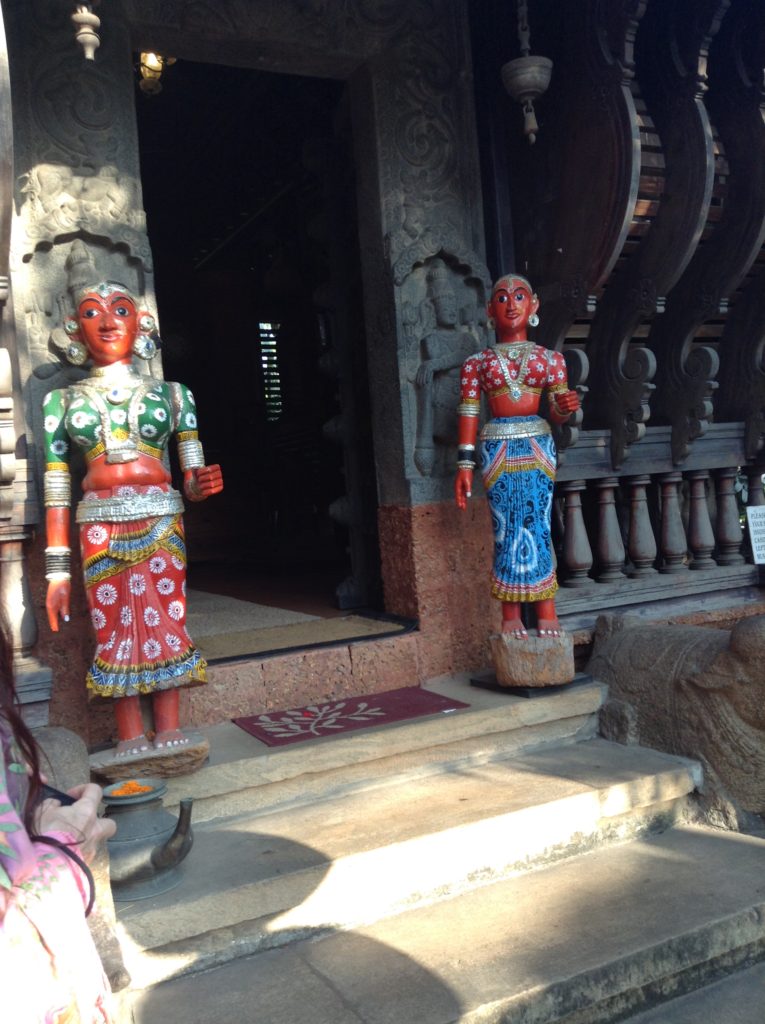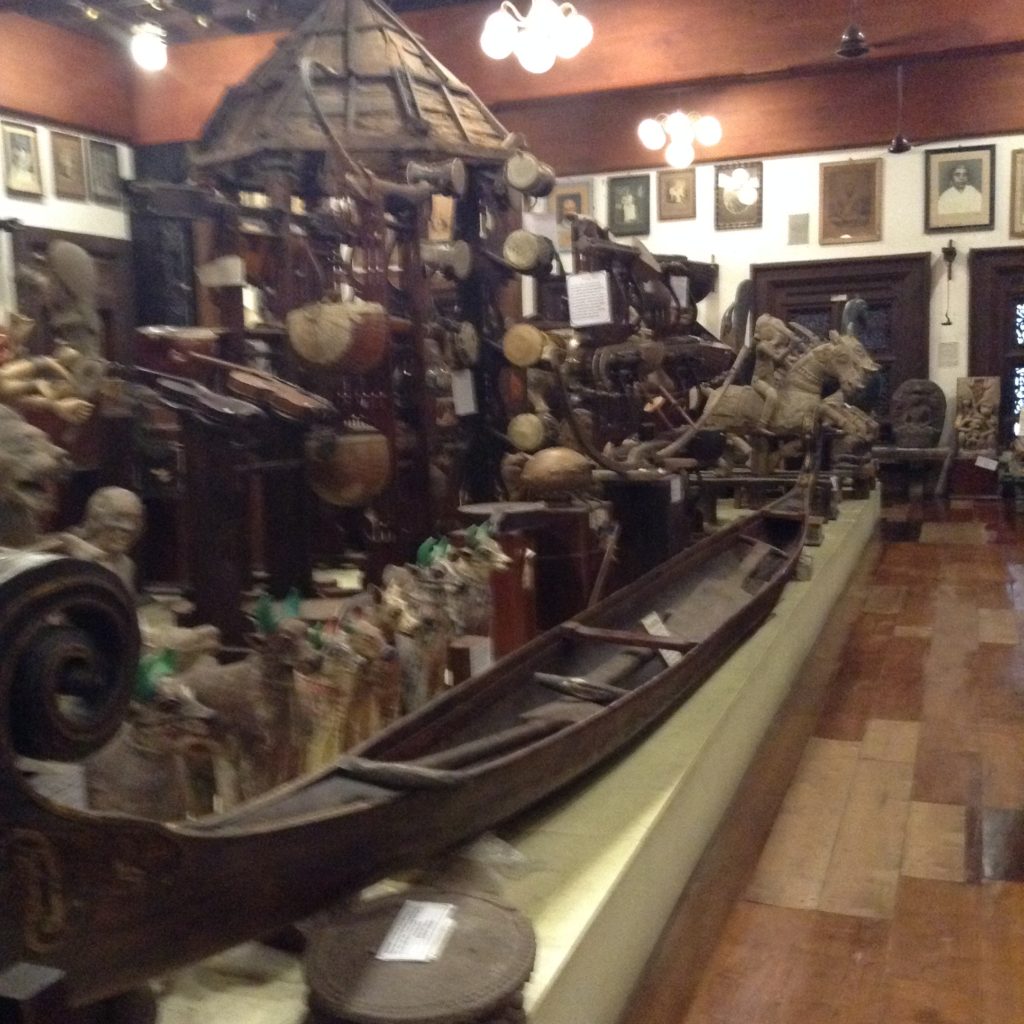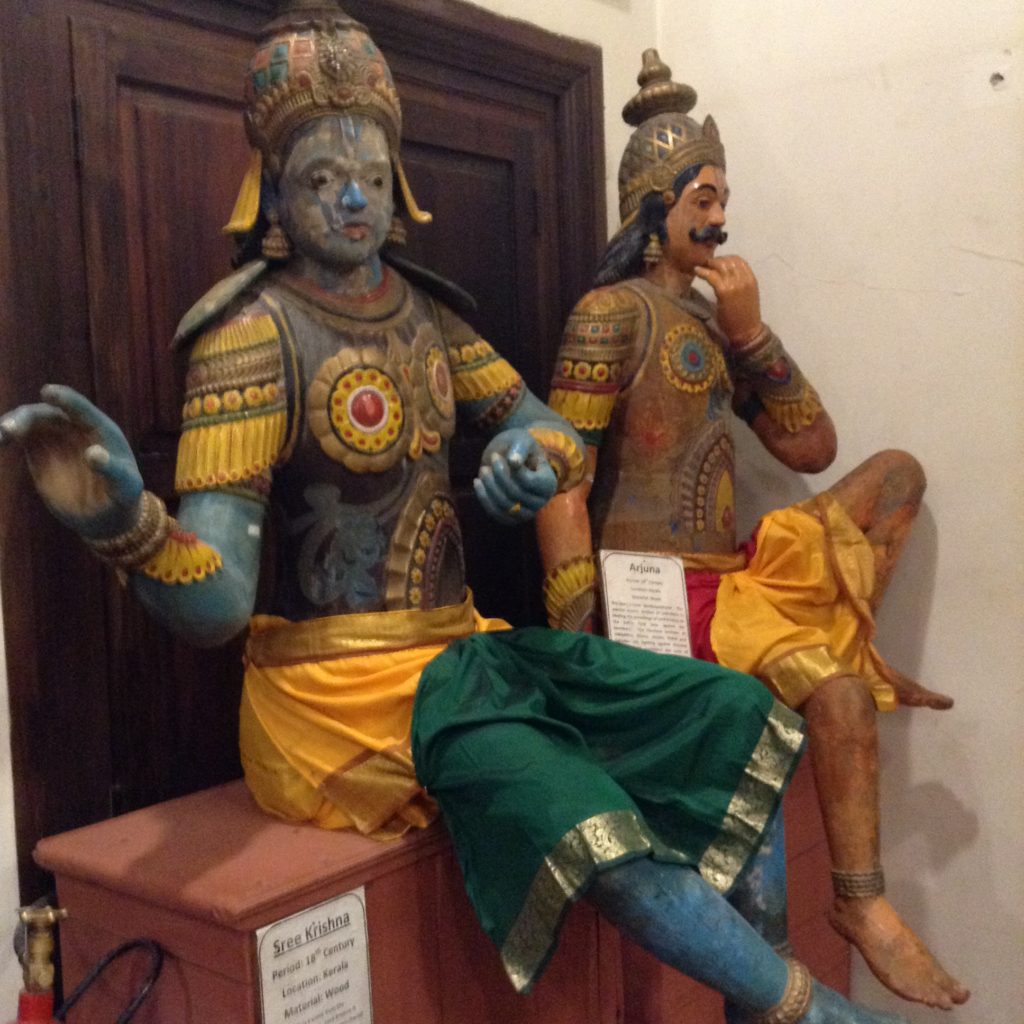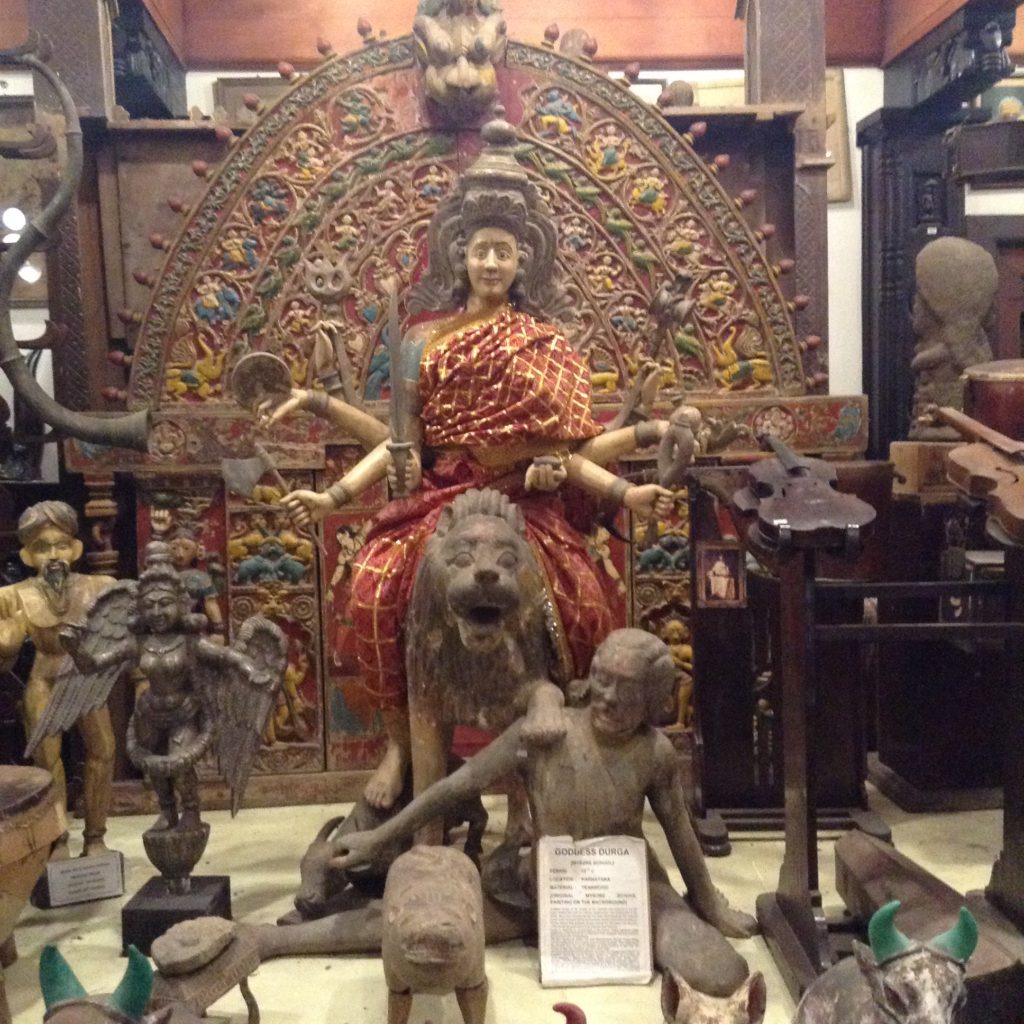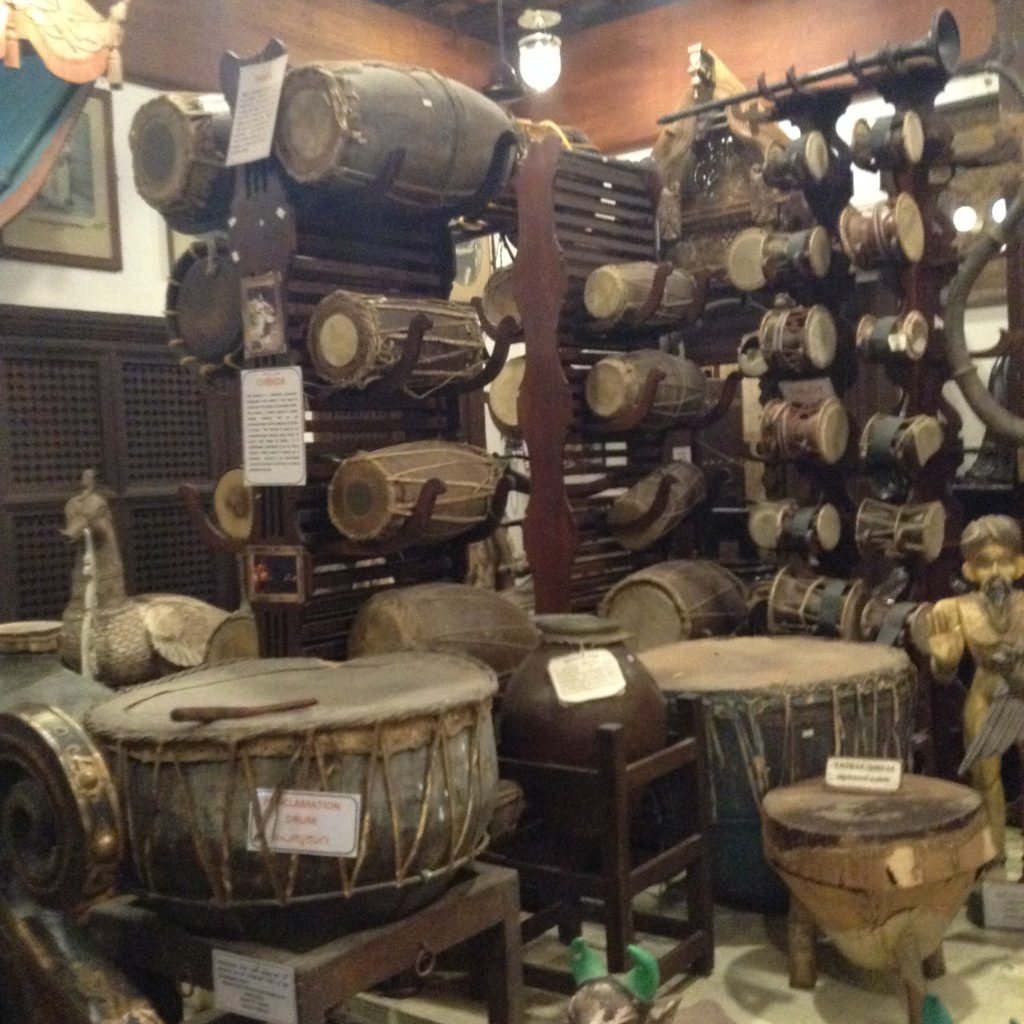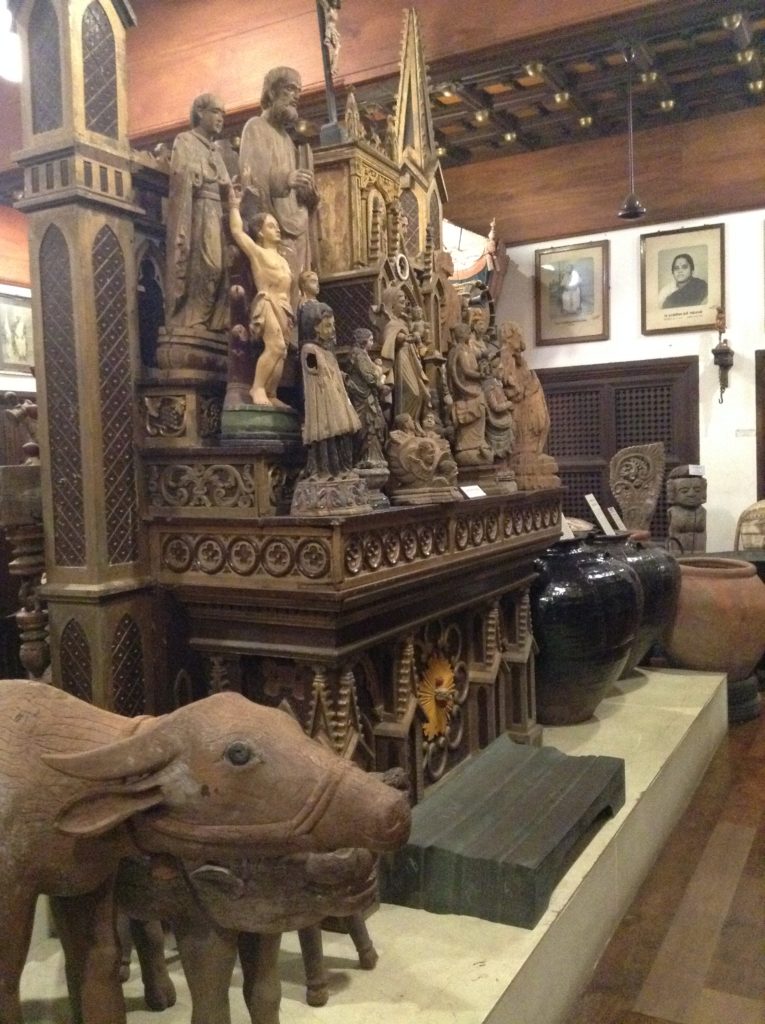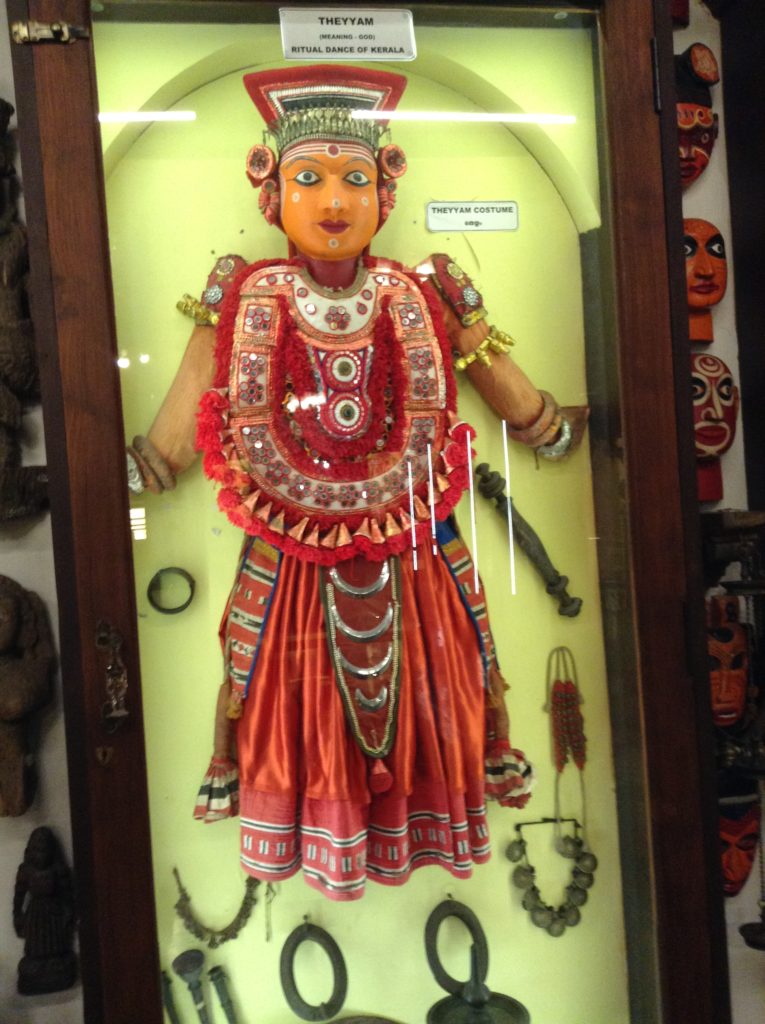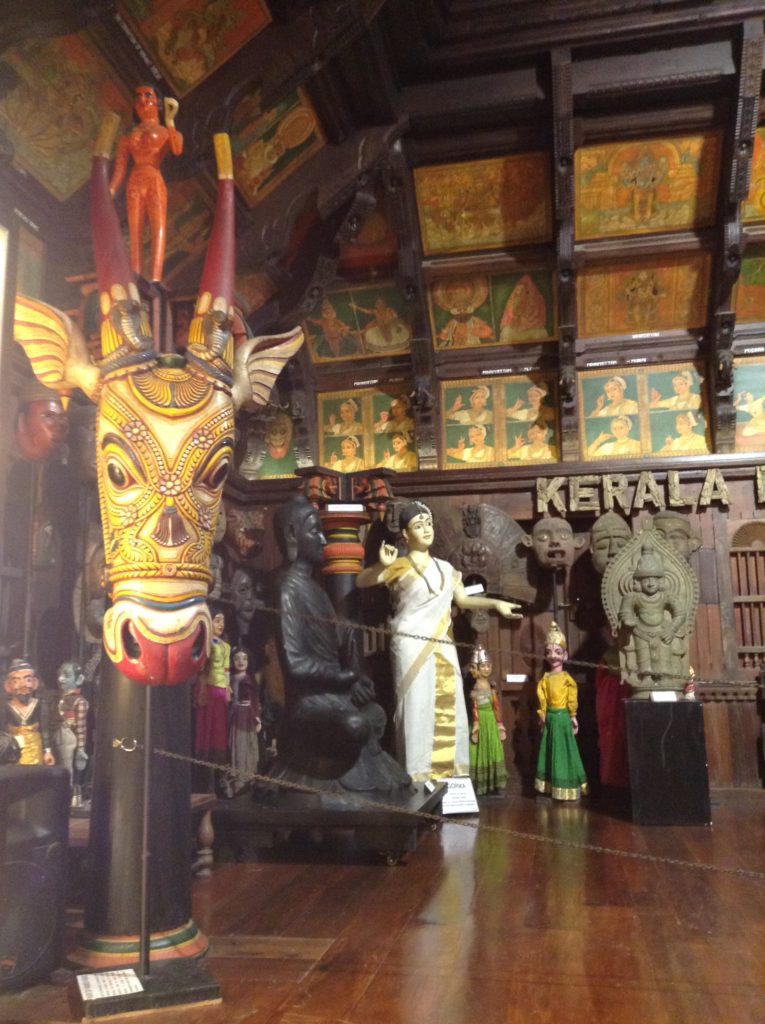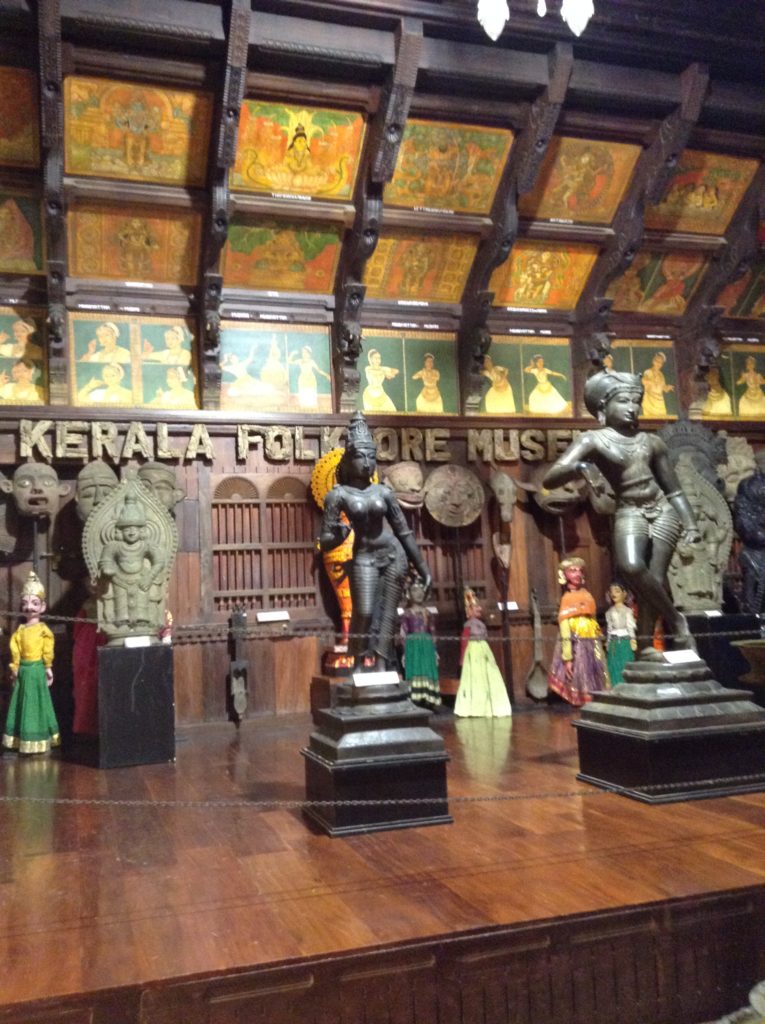We had arrived in Cochin, in central Kerala, and the room we had booked bore absolutely no resemblance whatsoever to the room not booked in Bethlehem, as it was comfortable, even luxurious, set in beautiful gardens on the edge of town and so free of traffic and other noise. Certainly it was a notch above our normal and perfectly pleasant rooms on this journey. We now settled in for a couple of days of a truly multi-cultural festivity, which included roast turkey, cranberry sauce and a selection of curried vegetables. ‘Silent Night’ drifted through the foyer and little girls in shalwar kameez played around the highly decorated red and gold Christmas tree, while their mothers and grandmothers in gorgeous sarees were even more ornamental. We reclined on sunloungers by the pool, strolled through the manicured gardens and made our first acquaintance with the waterways of Kerala, one of which ran past the gardens.
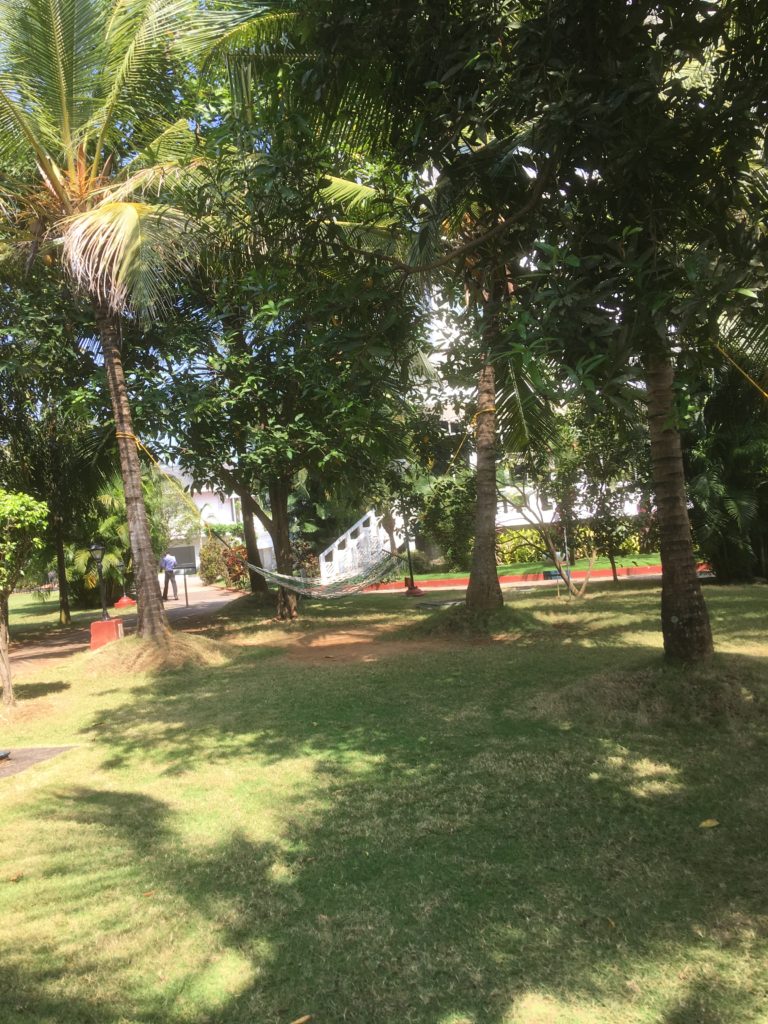

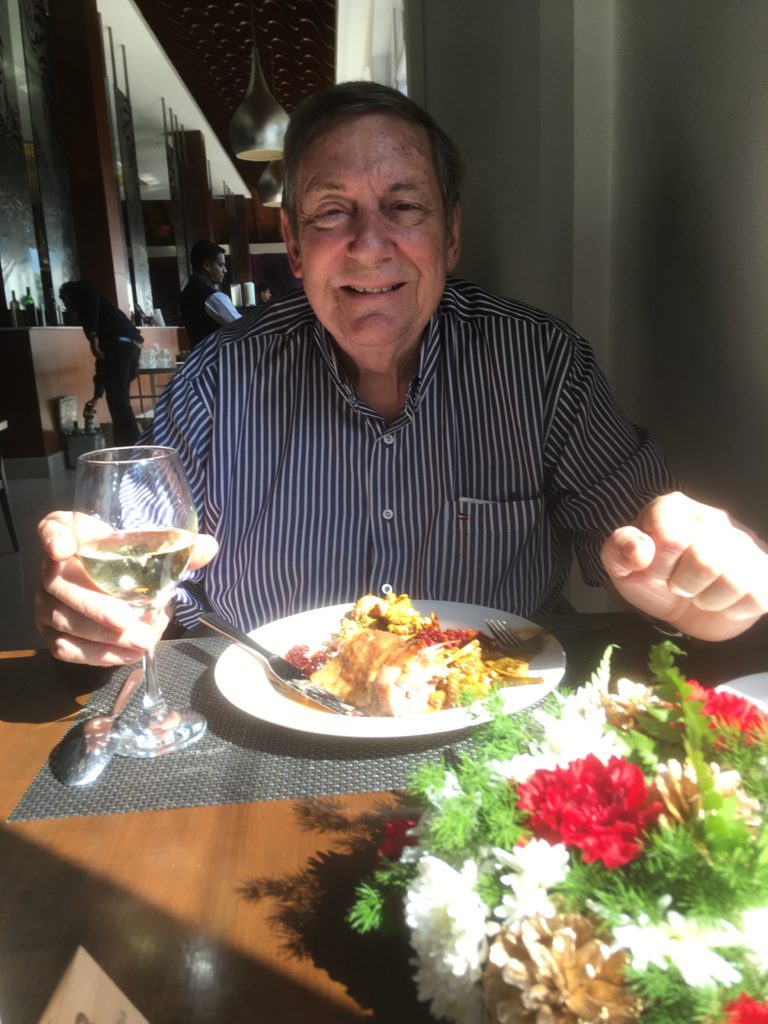
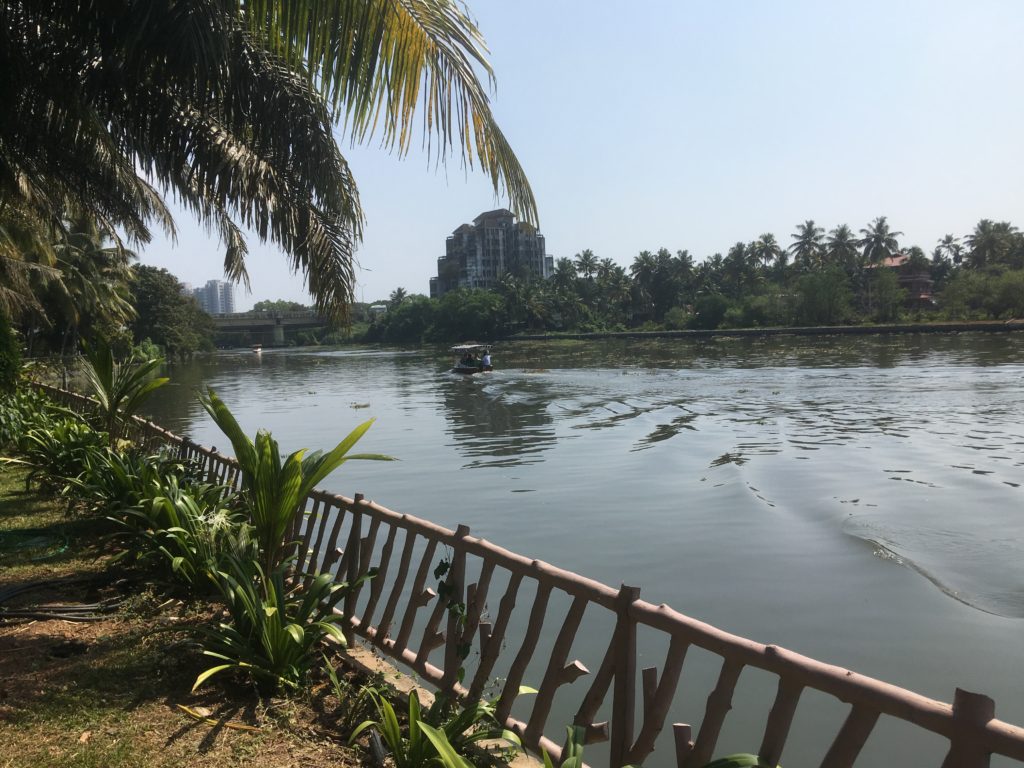
After a couple of days, the numbers of our fellow guests increased dramatically as they were gathering here for a large wedding. Soon more and more exquisitely dressed men and women appeared, often in sumptious silks, a dancefloor was erected and then an external banquet area, until finally, as we were leaving, virtually the entire hotel was taken over by the wedding party and the bride in her finery and henna patterned hands.
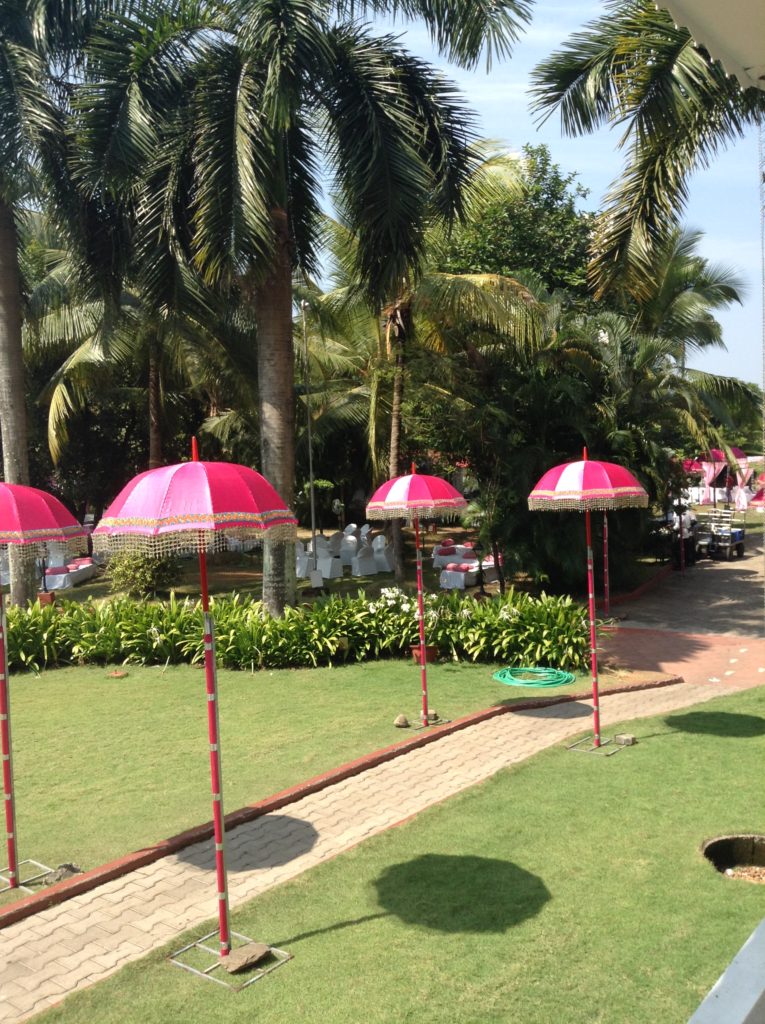
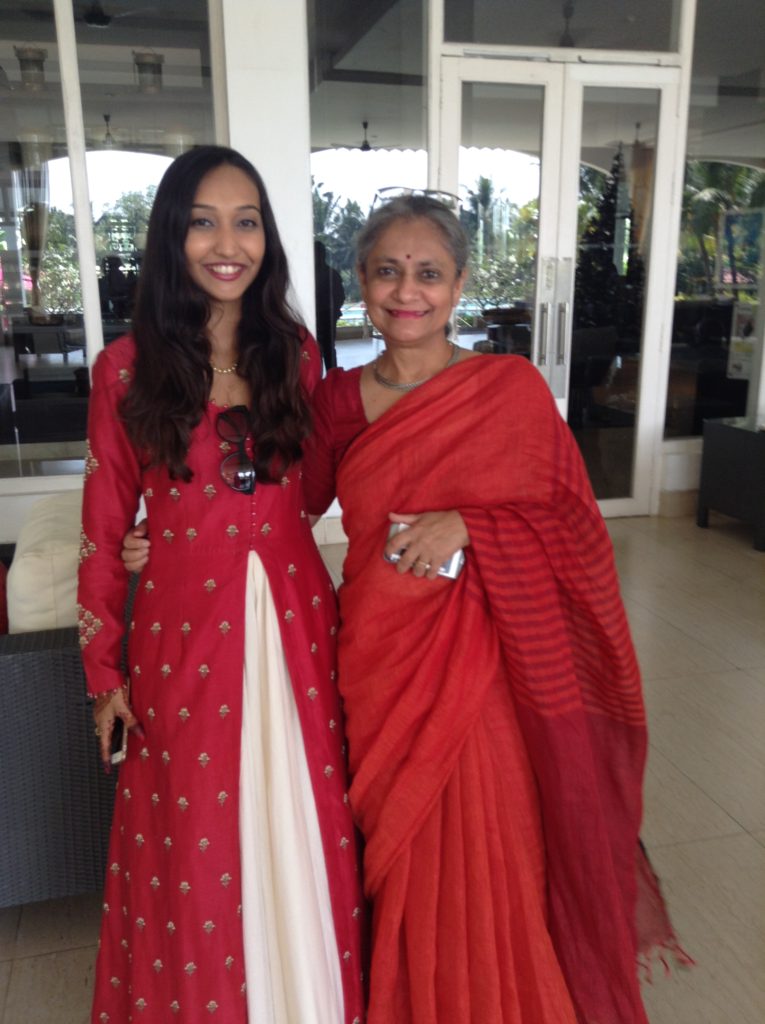
All along the way we have been struck by the vibrancy and intensity of India’s cultural wealth and the way in which Indian identity is so strong and certain. It seems able to assimilate whatever is new or comes from elsewhere and then transmute it into something distinctly Indian. It is such an interesting place to be visiting for so many reasons, including the fact that here in southern India there appears to be no friction between people of different religions, all of which seem to be widely practiced. The several varieties of Christianity, Latin, Syriac -West or East and their various denominations, and the different Protestant forms, are all well represented and very active, running schools, colleges and hospitals. Muslims and Hindus live harmoniously and in Cochin there is also a small Jain community with a small temple lavishly adorned with marble.
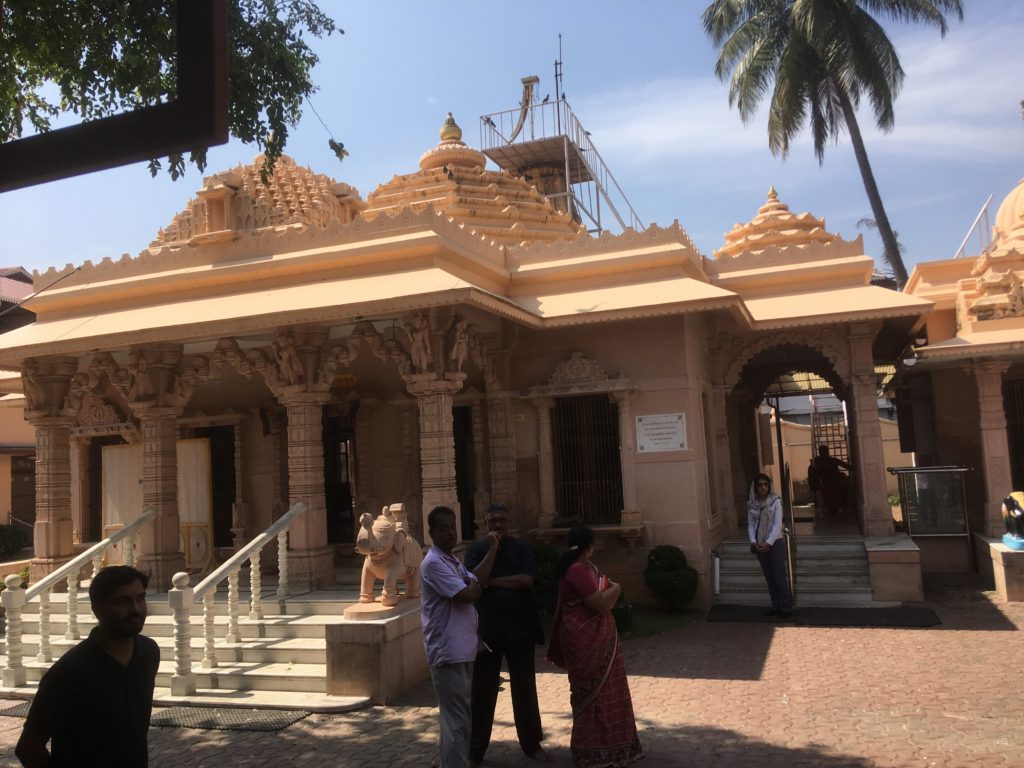
Folklore museums can sometimes be dispiriting places to visit, suggesting a world just out of reach, in the shadows of the recent past, lost and never again attainable. A few hand ploughs, some mattocks, mortars and pestles, milking stools and pans, perhaps some copper pots or a very old and blackened range, simple embroidery, rough earthenware, and almost inevitably, a couple of outfits once worn by now extinct peasant groups. To such a description, the Kerala Folklore Museum bears absolutely no resemblance. It is an extraordinary place created from the the remains of old houses and temples collected by the owner who is an antique dealer. Each level of the interior is in a different architectural style, Malabar, Kochi and Travancore all with solid teak floors and intricately worked doors and ceilings and it is overflowing with a series of beautiful collections, including a lovely wood-lined theatre with a 17th century ceiling. There are over 4,000 artefacts that include musical instruments, religious statues, temple deities, dancing and theatre costumes, seals, coins, beds, palm leaf texts, ancient bibles and Islamic miniatures. It is wonderful.
